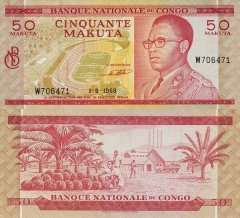- Saar
- Saint Helena
- Saint Lucia
- Samoa
- San Marino
- Sarawak
- Saudi Arabia
- Scotland
- Senegal
- Serbia
- Seychelles
- Sierra Leone
- Singapore
- Slovakia
- Slovenia
- Solomon Islands
- Somalia
- Somaliland
- South Africa
- South Sudan
- South West Africa
- Southern Rhodesia
- Spain
- Spitzbergen
- Sri Lanka
- St. Helena
- St. Kitts & Nevis
- St. Pierre & Miquelon
- St. Thomas & Prince
- St. Vincent
- Straits Settlements
- Sudan
- Suriname
- Swaziland
- Sweden
- Switzerland
- Syria
Congo
The Republic of the Congo is a country on the western coast of Central Africa along with its nearby countries of Gabon, the Democratic Republic of the Congo, Cameroon, the Central African Republic, and the Angolan exclave as well as the Atlantic Ocean. Congo’s mixed economy relies primarily on the oil sector. The nation is the fourth-largest producer of oil in the Gulf of Guinea, which paved the way for the country to thrive even in the middle of political and economic turbulence. The oil industry has provided a substantial share of government revenue and export. At the dawn of the 1980s, the surging oil revenues have enabled Congo to fund development programs, resulting in annual growth of 5% of GDP.
Because of overstaffing and mismanagement of budget, the country has mortgaged a huge percentage of its revenue from oil production through oil-backed loans. This has caused a growing debt and a persistent deficit. Congo’s economic progress was also impacted by the fall of oil prices. During the global recession, the decline in oil prices has brought national revenue down by about 30%.
There have been economic reform efforts supported by the World Bank and the IMF, and other international financial institutions. However, reforms were discontinued when the civil war erupted in June 1997. In March 2006, the IMF and the World Bank granted the Heavily Indebted Poor Countries (HIPC) for the country.
The national currency of the Republic of the Congo as well as other Central African countries is the Central African CFA francs. The first banknotes issued by the Central African States for its member states depict the same design on the reverse side showing a carved mask or statue and vignettes of economic activities. Their obverse design varies for each member country. For the Republic of the Congo, the obverse features a carved wooden mask or statue, a local, a village, or endemic animals.
-
Pick: 13b.4 | Date: 1970
-
Pick: 13b.3 | Date: 1968
-
Pick: 13b.2 | Date: 1967
-
Pick: 13 | Date: 1992
-
Pick: 12a.4 | Date: 1970
-
Pick: 12a.3 | Date: 1968
-
Pick: 12a.2 | Date: 1967
-
Pick: 12a.1 | Date: 1967
-
Pick: 12 | Date: 1992
-
Pick: 11a.4 | Date: 1970
-
Pick: 11a.3 | Date: 1968
-
Pick: 11a.2 | Date: 1967
-
Pick: 11 | Date: 1992
-
Pick: 10c | Date: 1991
-
Pick: 10b | Date: 1990
-
Pick: 10a.2 | Date: 1970
-
Pick: 10a.2 | Date: 1988
-
Pick: 10a.1 | Date: 1967
-
Pick: 10a.1 | Date: 1987































